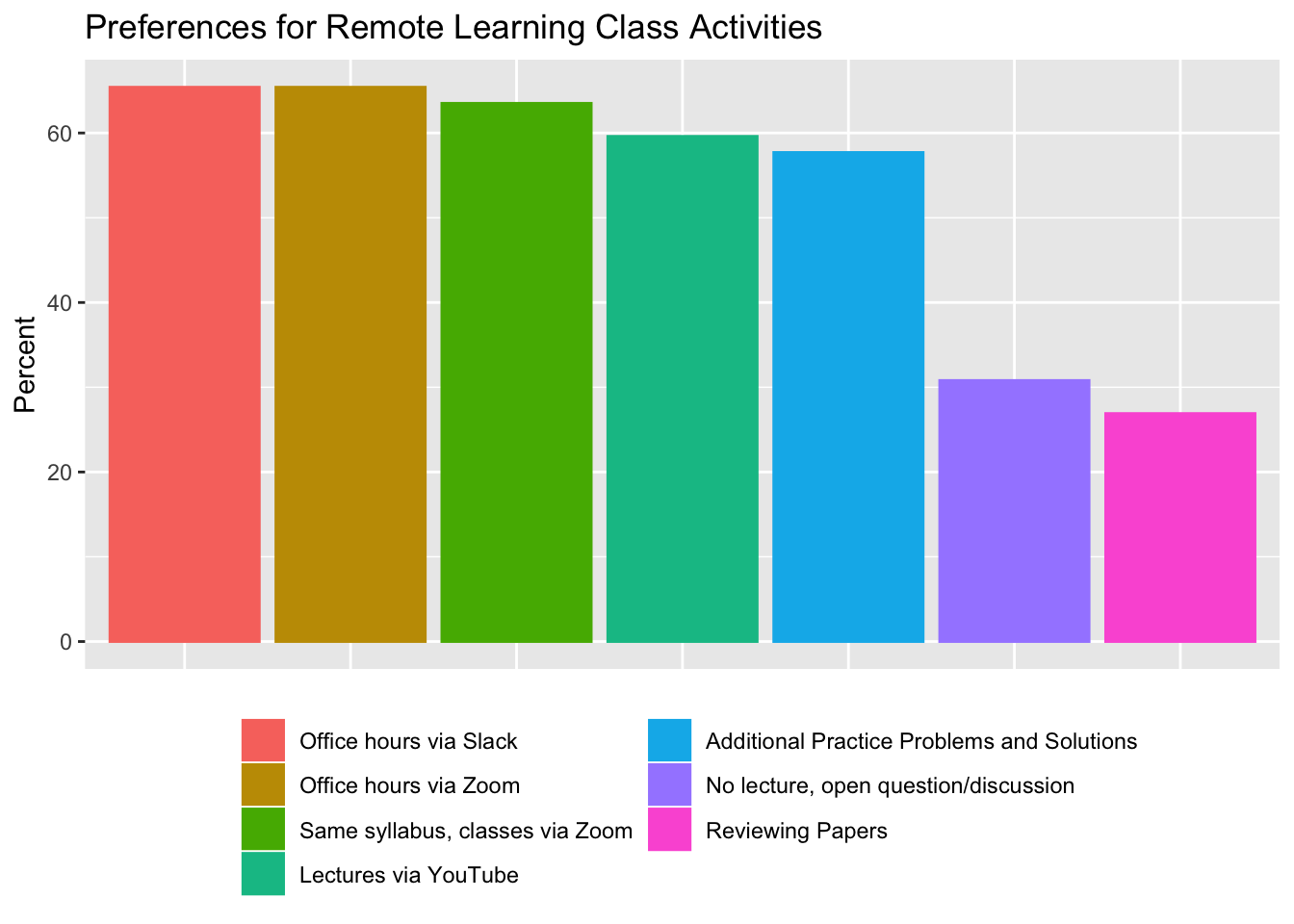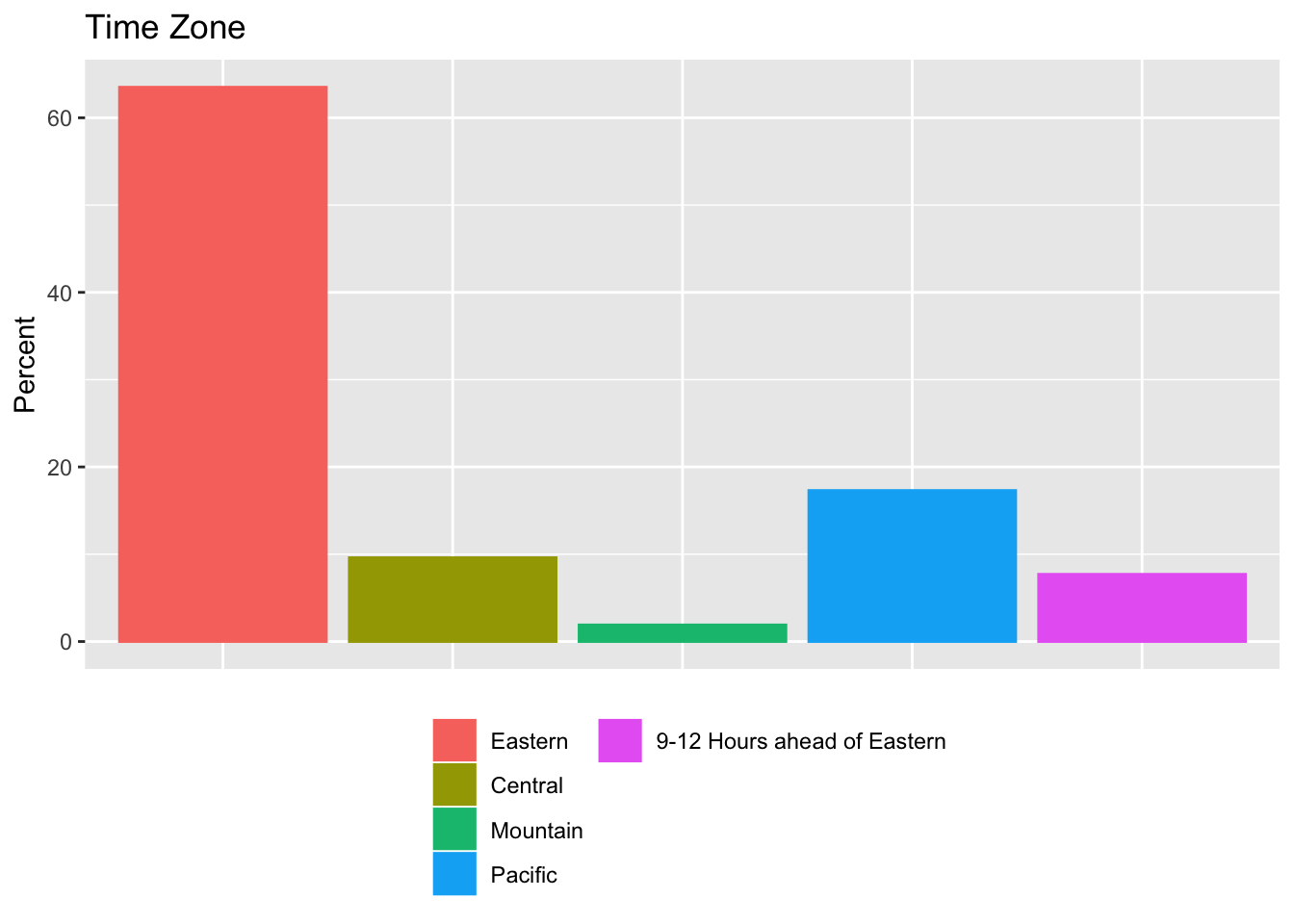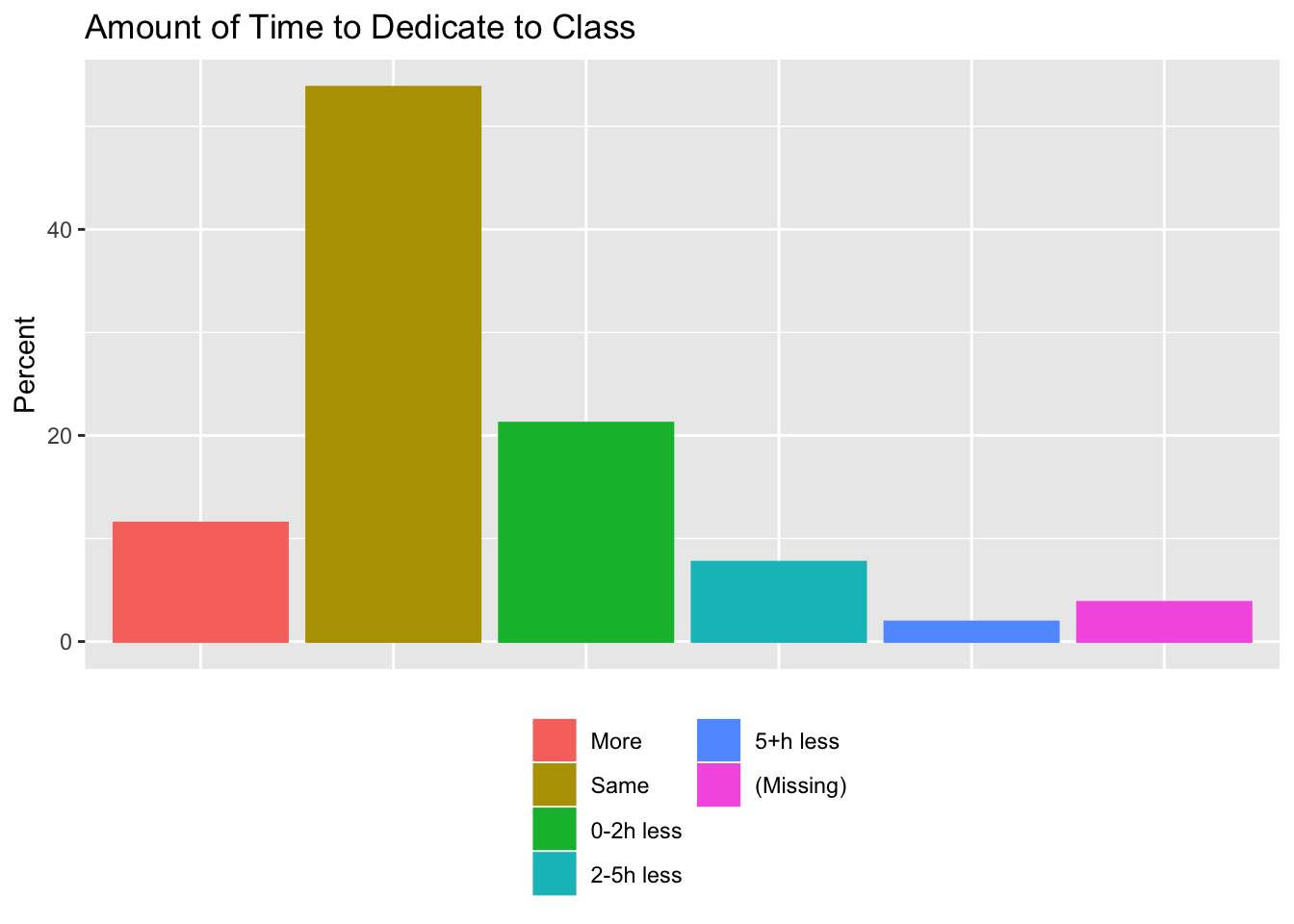Moving Forward After Spring Break
Most of you will remember the survey we did in class the Wednesday before spring break. This was really helpful for me to:
- understand the environment you’ll be learning in for the rest of the semester and
- guide some important decisions for how to structure the class.
Below are some of the results of what you said in that poll and some reflections from me about what that suggests as to how we move forward. Not everything you answered is included, especially things where there was pretty uniform/universal answer (i.e., nearly everyone had a laptop). Instead, I wanted to illustrate to you how I used your information to inform the plan for how to move forward – and for you to know what your classmates are facing in their learning – for the rest of the semester.
What kinds of activities should we be doing?

From my read of this graph, people would prefer that we:
- Do more or less the same syllabus and schedule, that is
- Delivered via Zoom (and recorded for (re-)watching), with
- Remote office hours (either Zoom and/or Slack).
Where are you all now?
And what does that mean for when we should have class via Zoom?

Most of you are in the U.S., primarily in the East coast/time zone. If we are indeed keeping class in real time, an afternoon class probably still works to accomodate those in the western time zones. For those out of the U.S., the best compromise will be to record lectures and have them posted to Moodle for you to watch. I’ll plan office hours that are more in line with the time differences - either early AM Eastern (~7AM) / afternoon or evening in Asia or later evening (10PM) / morning Asia, at least one of either per week. I’ll make a specific poll to see which of those options you’d prefer – stay tuned.
Time for the course

Most of you expect to have about the same amount of time as you did when you were on campus to dedicate to this class. I fully expect that your responses on Wednesday before spring break may have been optimistic and have changed now a few weeks into this reality. Moreover, about 30% of you thought you would have less time. I think the best approach here is minimal and realistic expectations so that everyone feels set up for success. Practically this means, I’m planning to make less required work and offering more recommended additional problems.
For those who can do more, you’re welcome to - and the sky is the limit there. There are some (12%) who said you might have more time. If you find yourself wanting substantially more work - or a bigger scope of work - there are many possibilities for additional regression modeling work within my own research projects and/or plenty of other data. I will come up with a few ideas of how to structure this and will look for more input from you all soon. If you have thoughts in the meantime, please let me know.